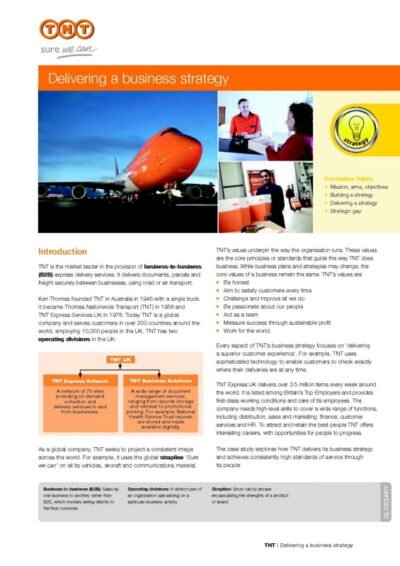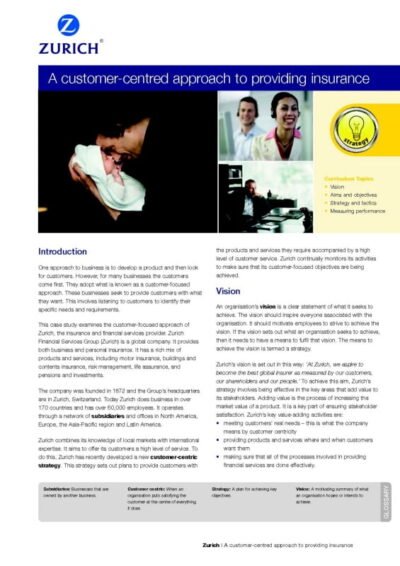Partner Relationship Management (PRM) is an essential framework that organisations employ to manage their interactions with business partners, including resellers, distributors, and affiliates. This strategic approach is designed to enhance collaboration, streamline communication, and ultimately drive mutual growth. PRM encompasses a variety of processes and tools that facilitate the management of partner relationships, ensuring that both parties can work together effectively towards common goals.
As businesses increasingly rely on partnerships to expand their reach and enhance their offerings, the significance of PRM has grown exponentially. The concept of PRM is rooted in the understanding that successful partnerships are built on trust, transparency, and shared objectives. By implementing a structured PRM strategy, organisations can foster stronger relationships with their partners, leading to improved performance and increased revenue.
This is particularly relevant in today’s competitive landscape, where businesses must leverage every available resource to maintain an edge. The evolution of technology has further transformed the way organisations approach PRM, enabling them to utilise sophisticated tools and platforms that enhance partner engagement and collaboration.
Summary
- Partner Relationship Management (PRM) is a strategic approach to managing relationships with business partners to achieve mutual business goals.
- PRM is important in business as it helps to streamline communication, improve collaboration, and drive sales growth through effective partner management.
- Key features and benefits of PRM include partner onboarding, training and certification, deal registration, lead distribution, and performance tracking.
- Successful PRM implementation requires clear goals, effective communication, training and support, and regular performance evaluation.
- Best practices for building strong partner relationships include clear communication, mutual trust, collaboration, and regular feedback and support.
The Importance of PRM in Business
Driving Revenue Growth and Shared Success
By nurturing strong relationships with partners, companies can tap into new markets, access innovative solutions, and enhance their product offerings. This collaborative approach not only drives revenue growth but also fosters a culture of shared success, where both the organisation and its partners benefit from their joint efforts.
Risk Management and Accountability
Moreover, PRM plays a crucial role in risk management. By establishing clear communication channels and performance metrics, organisations can identify potential issues early on and address them proactively. This not only mitigates risks associated with partner performance but also strengthens the overall partnership by fostering a sense of accountability.
Improved Customer Satisfaction
In addition, effective PRM can lead to improved customer satisfaction, as partners are better equipped to deliver value-added services and support when they are aligned with the organisation’s goals and objectives.
Key Features and Benefits of PRM

A robust PRM system typically includes several key features designed to enhance partner engagement and streamline management processes. One of the most critical components is a centralised partner portal, which serves as a single point of access for all partner-related information. This portal allows partners to access training materials, marketing resources, and performance metrics, thereby empowering them to perform more effectively.
Additionally, the portal can facilitate communication between partners and the organisation, ensuring that both parties remain aligned on objectives and expectations. Another significant feature of PRM is the ability to track partner performance through analytics and reporting tools. These tools provide valuable insights into how partners are performing against established KPIs, enabling organisations to identify high-performing partners as well as those that may require additional support or resources.
By leveraging data-driven insights, businesses can make informed decisions about resource allocation and partner development strategies. Furthermore, effective PRM systems often include automated workflows that streamline processes such as onboarding, training, and lead distribution, thereby reducing administrative burdens and allowing teams to focus on strategic initiatives. The benefits of implementing a comprehensive PRM strategy extend beyond operational efficiencies.
Strong partner relationships can lead to increased sales opportunities, as partners are more likely to promote products or services they believe in and feel supported by. Additionally, a well-structured PRM approach can enhance brand loyalty among partners, as they feel valued and recognised for their contributions. This loyalty can translate into long-term partnerships that yield sustainable growth for both parties involved.
Strategies for Successful PRM Implementation
Implementing a successful PRM strategy requires careful planning and execution. One of the first steps is to clearly define the objectives of the partnership programme. Organisations must identify what they hope to achieve through their partnerships—whether it be expanding market reach, increasing sales, or enhancing product offerings—and communicate these goals effectively to potential partners.
Establishing clear expectations from the outset sets the foundation for a productive relationship. Another critical strategy is to invest in comprehensive training and support for partners. Providing partners with the necessary resources and knowledge equips them to represent the brand effectively in the market.
This could include product training sessions, marketing workshops, or access to sales enablement tools. By ensuring that partners are well-informed and confident in their ability to sell the product or service, organisations can significantly enhance their chances of success. Furthermore, regular communication is vital for maintaining strong partner relationships.
Establishing a cadence for check-ins or performance reviews allows both parties to discuss progress towards goals, address any challenges that may arise, and celebrate successes together. This ongoing dialogue fosters a sense of collaboration and partnership that can lead to innovative solutions and improved performance over time.
Best Practices for Building Strong Partner Relationships
Building strong partner relationships requires a commitment to mutual success and open communication. One best practice is to establish a partner advisory council or similar forum where key partners can provide feedback on the partnership programme. This not only demonstrates that the organisation values its partners’ opinions but also allows for continuous improvement based on real-world insights.
Another effective practice is to recognise and reward partner achievements. Celebrating milestones or successes—whether through formal awards programmes or informal recognition—can significantly boost partner morale and motivation. When partners feel appreciated for their contributions, they are more likely to remain engaged and committed to the partnership.
Additionally, fostering a culture of transparency is essential for building trust between organisations and their partners. Sharing relevant data regarding market trends, customer feedback, or competitive insights can empower partners to make informed decisions that align with the organisation’s objectives. This level of openness not only strengthens relationships but also encourages collaboration on joint initiatives that can drive growth for both parties.
Tools and Technologies for PRM

The landscape of Partner Relationship Management has been transformed by advancements in technology. A variety of tools and platforms are now available to facilitate effective PRM strategies. Customer Relationship Management (CRM) systems often integrate PRM functionalities, allowing organisations to manage both customer and partner interactions from a single platform.
This integration provides a holistic view of all relationships and enables more informed decision-making. Dedicated PRM software solutions have also emerged in recent years, offering features specifically designed for managing partner relationships. These platforms typically include functionalities such as partner onboarding workflows, performance tracking dashboards, and communication tools that streamline interactions between organisations and their partners.
For instance, platforms like Allbound or Zift Solutions provide comprehensive solutions that cater specifically to the needs of channel partners. Moreover, analytics tools play a crucial role in modern PRM strategies. By leveraging data analytics, organisations can gain insights into partner performance trends, identify areas for improvement, and make data-driven decisions regarding resource allocation.
These insights can be invaluable in optimising partner programmes and ensuring that both parties are aligned in their efforts.
Challenges and Solutions in PRM
Despite its many benefits, implementing an effective PRM strategy is not without challenges. One common issue is the difficulty in aligning goals between the organisation and its partners. Partners may have different priorities or business models that do not fully align with those of the organisation.
To address this challenge, it is essential to engage in open discussions during the onboarding process to ensure that both parties have a clear understanding of each other’s objectives. Another challenge lies in managing partner performance consistently across diverse channels or regions. Variability in market conditions or partner capabilities can lead to discrepancies in performance levels.
To mitigate this issue, organisations should establish standardised performance metrics while allowing for flexibility based on regional differences or specific partner capabilities. Regular performance reviews can help identify underperforming partners early on so that targeted support can be provided. Additionally, maintaining effective communication can be challenging as partnerships grow in complexity.
As more partners are added to the network, ensuring that everyone remains informed about updates or changes becomes increasingly difficult. Implementing a robust communication strategy that includes regular updates through newsletters or webinars can help keep all partners engaged and informed about important developments within the organisation.
Conclusion and Future Trends in PRM
As businesses continue to evolve in an increasingly interconnected world, the future of Partner Relationship Management looks promising yet challenging. The rise of digital transformation is likely to further shape how organisations approach PRM strategies. With advancements in artificial intelligence (AI) and machine learning (ML), organisations will be able to leverage predictive analytics to anticipate partner needs and optimise engagement strategies proactively.
Moreover, as remote work becomes more prevalent, organisations will need to adapt their PRM approaches accordingly. Virtual collaboration tools will play an essential role in maintaining strong relationships with partners who may not be physically present. Emphasising digital communication channels will be crucial for ensuring that partnerships remain robust despite geographical barriers.
In conclusion, as businesses navigate an ever-changing landscape characterised by rapid technological advancements and shifting market dynamics, effective Partner Relationship Management will remain a cornerstone of successful business strategies. By embracing innovative tools and fostering strong relationships built on trust and collaboration, organisations will be well-positioned to thrive in this new era of partnership-driven growth.
Partner Relationship Management (PRM) is crucial for businesses to maintain strong relationships with their partners and drive mutual success. A related article on optimizing business performance highlights the importance of implementing effective strategies to enhance overall business operations. By utilising PRM tools and techniques, companies can streamline communication, improve collaboration, and ultimately achieve better results with their partners. This article provides valuable insights into how businesses can leverage PRM to maximise their performance and achieve sustainable growth.
FAQs
What is Partner Relationship Management (PRM)?
Partner Relationship Management (PRM) is a business strategy and set of software tools used to manage relationships with an organization’s channel partners, such as distributors, resellers, and other types of indirect sales channels.
What are the key components of Partner Relationship Management?
The key components of Partner Relationship Management include partner recruitment and onboarding, partner enablement and training, partner performance management, deal registration, lead distribution, and partner communication and collaboration.
How does Partner Relationship Management differ from Customer Relationship Management (CRM)?
While Customer Relationship Management (CRM) focuses on managing relationships with customers, Partner Relationship Management (PRM) focuses on managing relationships with channel partners and other indirect sales channels.
What are the benefits of implementing Partner Relationship Management?
The benefits of implementing Partner Relationship Management include improved partner engagement, increased partner productivity, better visibility into partner performance, streamlined partner communication, and enhanced collaboration with channel partners.
What are some popular PRM software solutions?
Some popular PRM software solutions include Salesforce Partner Community, Zift Solutions, Impartner, Allbound, and Channeltivity. These platforms offer a range of features to support partner relationship management activities.
 Delivering a business strategy (PDF)
Delivering a business strategy (PDF)  A customer-centred approach to providing insurance (PDF)
A customer-centred approach to providing insurance (PDF) 